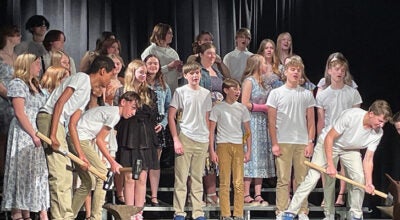Most MN students buckle up for another stretch of distance learning
Published 6:04 am Wednesday, December 2, 2020
|
Getting your Trinity Audio player ready...
|
Elizabeth Shockman and David H. Montgomery
With COVID-19 cases, deaths and hospitalizations at or near record highs, roughly 60 percent of Minnesota K-12 students are currently in distance learning — more than double the rate from early October.
Many schools pivoted to remote instruction just before Thanksgiving break and plan to stay that way for at least a couple of months. St. Paul Public Schools, for example, which began the year with distance learning, won’t resume any in-person instruction until at least Jan. 19, or two weeks after the end of winter break.
The timing gives space for a two-week quarantine period and allows officials to assess the extent to which COVID-19 has spread as people gather over the winter holidays, despite pleas from public health officials to hunker down.
Across the state, about 10 percent of students — mostly elementary school students — are attending classes in physical school buildings five days a week. That share could shrink even more if the virus continues to proliferate in community settings.
The students least likely to be receiving in-person learning are in the Twin Cities metro area. Those in west central or southwest Minnesota are more likely to be in physical classrooms.
Even some private schools that were among the first in some regions to announce they would open their classrooms for in-person instruction in the fall are not immune to the sweep of changes. Catholic schools in the St. Cloud metro area recently said they would end in-person classes through the holidays.
The decision, which went into effect Monday, affects nine schools and approximately 1,900 students. COVID-19 case rates in the St. Cloud metro area have soared to over three or four times the threshold state health officials recommend for in-person or hybrid learning.
The shuttering of school buildings is again heaping pressures on students and families, many of whom are trying to navigate home learning around work schedules during the pandemic. The transition to full-time distance learning has also put a strain on educators who were just starting to figure out new ways of doing school.
One troubling metric: failing grades
New data from the state’s second largest school district gives a glimpse of the impact closures are having on student learning.
In a recent school board meeting, administrators with St. Paul Public Schools said the number of failing grades has doubled over the previous year.
Last year this time, approximately 16 percent of grades were failing. This year, close to 36 percent of grades are failing, and 900 high school students are expected to need credit recovery help this year.
This year the district opened an academic support center at Washington Technology Magnet where a limited number of students could show up for in-person help or a quiet, dedicated place to work. According to Chief Operations Officer Jackie Turner, the option to go to a school building made a critical difference for many students who’ve struggled to stay on track at home.
“They need that person, they need that accountability, they need to walk into a space and have somebody in front of them saying, ‘OK, keep going. You can do it,’” Turner said.
But on Nov. 19, St. Paul Public Schools closed in-person academic support at Washington, due to rising COVID-19 case rates until the end of January.
Like many Minnesota school districts, they’re back to attempting to help struggling students —from a distance.





